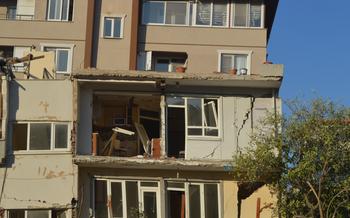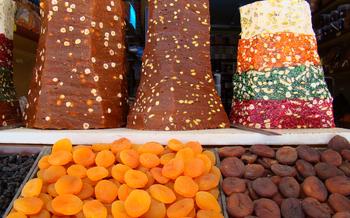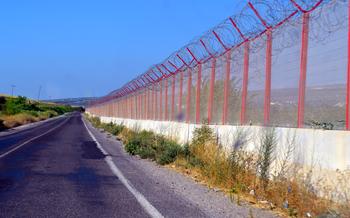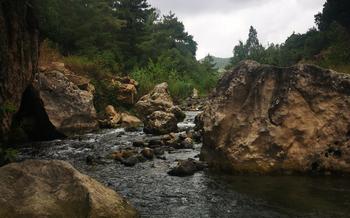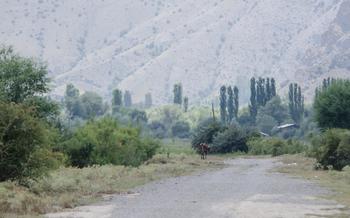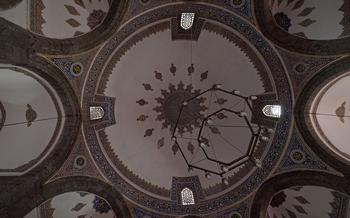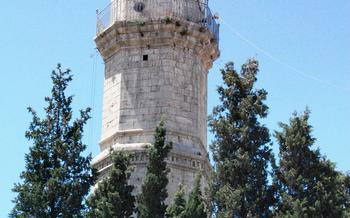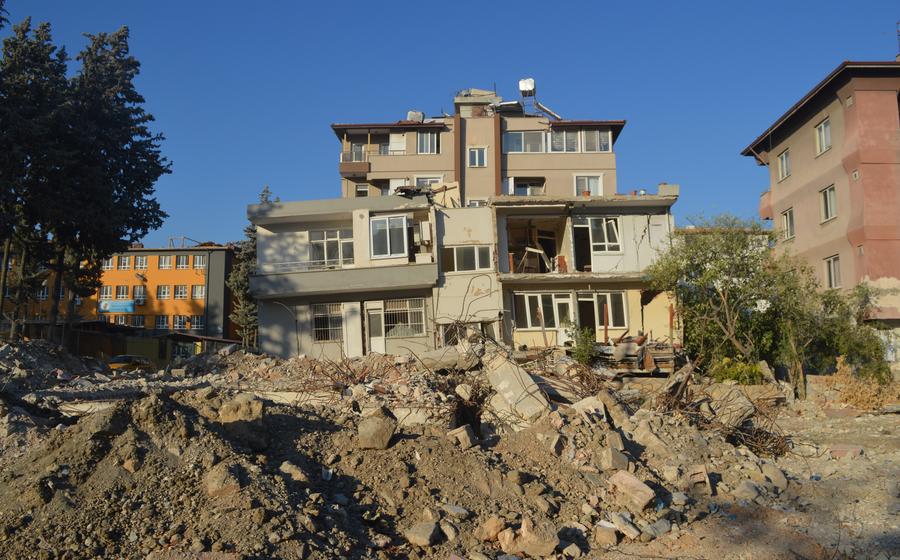
Hassan Bey Mosque
- A Journey Through History: Hassan Bey Mosque
- Location: A Crossroads of Cultures
- Unveiling the Past: The Mosque's History
- A House of Worship: The Mosque's Purpose
- Exploring the Mosque's Exterior
- Stepping Inside: The Mosque's Interior
- Unique Features: What Sets it Apart
- A Place of Interfaith Harmony
- Hassan Bey Mosque: A Cultural Tapestry
- The Call to Prayer: A Unique Experience
- Practical Information: Visiting the Mosque
- Exploring Hatay's Culinary Delights
- Other Must-Visit Sites in Hatay
- Transportation and Accommodation
- Insider Tip: Unveiling Hidden Gems
A Journey Through History: Hassan Bey Mosque
Hassan Bey Mosque, nestled in the heart of Hatay, Turkey, stands as a testament to the region's rich history and architectural heritage. Built in the 13th century during the Seljuk period, the mosque has undergone several renovations and expansions over the centuries, reflecting the diverse influences that have shaped this vibrant city.
Architecturally, the Hassan Bey Mosque is a masterpiece of Seljuk craftsmanship. Its intricate stone carvings, decorative tilework, and graceful minaret exemplify the artistic prowess of the era. The mosque's unique blend of Ottoman and Umayyad styles further highlights its significance as a cultural and historical landmark.
Location: A Crossroads of Cultures
Hatay, situated in southern Turkey, is a region brimming with historical significance and cultural diversity. It shares borders with Syria to the south and east, and the Mediterranean Sea to the west. This strategic location has made Hatay a crossroads of civilizations throughout history, resulting in a rich tapestry of cultures and traditions.
The city of Hatay, the province's capital, is a testament to this diversity. Home to people of various ethnicities and religions, including Turks, Arabs, Armenians, and Jews, Hatay boasts a harmonious coexistence of different cultures. This vibrant city is renowned for its delicious cuisine, which draws inspiration from various culinary traditions, making it a true foodie's paradise.
The Hassan Bey Mosque stands as a symbol of this cultural amalgamation. Its proximity to several other historical sites, including the ancient city of Antioch and the crusader fortress of Saladin, further underscores Hatay's profound historical legacy.
Unveiling the Past: The Mosque's History
The Hassan Bey Mosque stands as a testament to Hatay's rich history and architectural heritage. Its construction dates back to the 13th century, during the reign of the Seljuk Sultanate. Built by the governor of Hatay, Hassan Bey, the mosque has undergone several renovations and restorations over the centuries, each adding to its unique character.
The mosque's architectural style reflects the Seljuk influence, with its distinctive pointed arches, intricate stone carvings, and decorative tilework. It has undergone several modifications throughout its existence, incorporating elements of Ottoman and Umayyad architecture. The mosque's minaret, a striking feature of the skyline, was added during the Ottoman period, while the interior was renovated in the 19th century, showcasing a blend of traditional and modern styles.
Local legends and stories surrounding the mosque add to its mystique. One tale speaks of a hidden treasure buried beneath the mosque, attracting treasure hunters over the years. Another legend tells of a secret tunnel connecting the mosque to the nearby citadel, used by the governor to escape in times of danger. These stories, passed down through generations, contribute to the mosque's allure and captivate visitors with its rich historical tapestry.
A House of Worship: The Mosque's Purpose
The Hassan Bey Mosque primarily serves as a place of worship for the Muslim community in Hatay. The call to prayer, known as the "adhan," is issued five times daily from the mosque's minaret, summoning the faithful for prayer. These prayers, known as "salat," are performed in congregation inside the mosque's prayer hall, creating a sense of unity and devotion among the worshipers.
In addition to daily prayers, the mosque also hosts religious observances and community gatherings. During the holy month of Ramadan, the mosque stays open throughout the night, allowing Muslims to perform special prayers and engage in spiritual reflection. It also serves as a venue for religious lectures, workshops, and discussions, promoting Islamic teachings and fostering a sense of community among the local Muslim population.
Exploring the Mosque's Exterior
The Hassan Bey Mosque stands as a testament to the architectural prowess of its time. Its exterior exudes an aura of grandeur and intricate craftsmanship. The graceful minaret, a symbol of Islamic architecture, rises majestically towards the heavens, its slender silhouette piercing the azure sky. The minaret's intricate stone carvings and decorative tilework showcase the exceptional craftsmanship of the Seljuk artisans.
The mosque's facade is adorned with exquisite stone carvings that depict geometric patterns, floral motifs, and calligraphic inscriptions. These intricate carvings lend a sense of depth and texture to the mosque's exterior, creating a visual masterpiece that captivates the eye. The decorative tilework, featuring vibrant shades of blue, green, and turquoise, adds a touch of color and elegance to the mosque's exterior.
The ablution fountain, located in the courtyard of the mosque, is another remarkable feature. This octagonal fountain, with its intricately carved stone basin and cascading water, serves as a place for ritual ablutions before prayers. The fountain's serene atmosphere and the gentle sound of flowing water create a sense of tranquility, preparing the worshippers for their spiritual journey within the mosque.
Stepping Inside: The Mosque's Interior
Venturing into the Hassan Bey Mosque's prayer hall, visitors are enveloped in a serene and sacred ambiance. The high-ceilinged space exudes a sense of tranquility, inviting worshippers and visitors alike to pause and reflect. The walls are adorned with intricate calligraphic inscriptions, each stroke meticulously crafted to convey verses from the Quran or poetic passages that glorify the divine.
The Mihrab, a niche in the wall indicating the direction of Mecca, is a focal point of the prayer hall. Its intricate carvings and colorful tilework create a mesmerizing display of artistry. The Minbar, a raised platform used by the Imam to deliver sermons, stands beside the Mihrab, adorned with intricate woodwork and geometric patterns.
Natural light filters through the stained glass windows, casting a warm glow upon the interior. The windows depict scenes from Islamic history and calligraphy, adding to the mosque's rich visual tapestry. The overall effect is one of awe and inspiration, creating a sacred space that encourages contemplation and spiritual connection.
Unique Features: What Sets it Apart
The Hassan Bey Mosque stands out for its exceptional architectural features that distinguish it from other mosques in the region. It is one of the rare surviving examples of Seljuk architecture, renowned for its intricate craftsmanship and attention to detail. The mosque's acoustics are remarkable, creating a reverberating effect that enhances the spiritual experience during prayers and religious ceremonies. This acoustic phenomenon is attributed to the mosque's unique architectural design and the use of specific materials.
Furthermore, the Hassan Bey Mosque showcases a harmonious blend of Ottoman and Umayyad architectural styles. The Ottoman influence is evident in the mosque's overall design, while the Umayyad influence is reflected in the intricate stone carvings and decorative tilework adorning the exterior. The integration of local craftsmanship adds a distinctive touch to the mosque, showcasing the skills and artistry of the region's artisans.
A Place of Interfaith Harmony
The Hassan Bey Mosque stands as a testament to the rich cultural tapestry of Hatay, where different faiths have coexisted harmoniously for centuries. The mosque's open doors welcome people of all beliefs, fostering a sense of mutual respect and understanding. Muslims, Christians, and Jews have lived side by side in Hatay for generations, sharing common spaces, traditions, and celebrations. The mosque serves as a symbol of this harmonious coexistence, where the call to prayer echoes through the streets, uniting the community in a shared spiritual experience.
The mosque's design and architecture reflect this spirit of inclusivity, incorporating elements from various cultures and religions. The minaret, inspired by Byzantine architecture, blends seamlessly with the mosque's Islamic design. The interior features intricate carvings and calligraphy that draw upon both Islamic and Christian motifs. This harmonious blend of architectural styles symbolizes the mosque's role as a bridge between different faiths, fostering a sense of unity and respect among the diverse communities of Hatay.
Hassan Bey Mosque: A Cultural Tapestry
Hassan Bey Mosque serves as a vibrant cultural hub, fostering a deep appreciation for Hatay's rich artistic and intellectual heritage. The mosque frequently hosts a variety of cultural events that showcase the region's diverse talents.
Art exhibitions and workshops provide a platform for local artists to display their creative works, ranging from traditional crafts to contemporary installations. Visitors can engage with the artists, learn about their techniques, and gain insights into the vibrant art scene of Hatay.
Traditional music performances fill the mosque with enchanting melodies, transporting visitors to a realm of cultural immersion. Listeners are captivated by the soulful sounds of the ney, oud, and other traditional instruments, accompanied by rhythmic beats and captivating vocals.
Storytelling and educational programs bring the history and culture of Hatay to life. Local storytellers regale visitors with tales of the region's past, while experts share their knowledge through lectures and workshops. These programs foster a deeper understanding of Hatay's unique cultural tapestry.
Hassan Bey Mosque stands as a testament to the harmonious coexistence of diverse cultures in Hatay. Its embrace of cultural events celebrates the region's rich artistic traditions and fosters a sense of unity and shared identity among the community.
The Call to Prayer: A Unique Experience
The call to prayer, or Ezan, is an integral part of Islamic tradition and a captivating experience for visitors to the Hassan Bey Mosque. The Muezzin's melodic voice reverberates through the streets of Hatay, echoing through the ancient alleys and across the bustling squares. The call, a rhythmical chant in Arabic, invites the faithful to prayer and reminds them of their connection with the divine.
As the Muezzin's voice rises and falls, the city seems to come to a standstill. People pause their conversations, shopkeepers step out of their stores, and passersby turn towards the mosque, their faces turned towards Mecca. The Ezan's mesmerizing melody creates a sense of unity and tranquility, uniting the community in a shared moment of devotion.
For travelers, witnessing the call to prayer is an opportunity to experience the city's spiritual side and gain a deeper appreciation for Islamic culture. It is a chance to immerse oneself in the rhythms of daily life in Hatay and feel the pulse of a city where faith and tradition are deeply intertwined.
Practical Information: Visiting the Mosque
When visiting the Hassan Bey Mosque, there are a few practical considerations to keep in mind:
-
Dress code and etiquette: As a place of worship, visitors are expected to dress respectfully. For women, this means covering their heads and shoulders, and for men, it means avoiding shorts or tank tops.
-
Mosque's opening hours: The mosque is generally open to visitors during daylight hours, but it is always advisable to check with local sources for the exact timings.
-
Guided tours availability: While self-guided tours are permitted, guided tours are also available for those who want to learn more about the mosque's history and significance.
-
Photography guidelines: Photography is allowed within the mosque, but it is important to be respectful of worshippers and avoid taking pictures during prayers or other religious observances.
Exploring Hatay's Culinary Delights
Hatay, with its diverse history and cultural influences, is a true culinary paradise. The city boasts a unique blend of flavors, spices, and aromas that have made its cuisine famous worldwide. Visitors to Hatay are in for a treat as they explore the city's vibrant food scene.
One of the must-try dishes in Hatay is künefe, a sweet pastry made from shredded phyllo dough, filled with cheese, and topped with a sweet syrup. Hummus, a creamy dip made from chickpeas, tahini, and olive oil, is another popular choice.
For those who enjoy spicy food, lahmacun, a crispy flatbread topped with minced meat, vegetables, and spices, is a must-try. Alinazik, a dish made from grilled eggplant topped with minced meat and yogurt, is another local delicacy.
In Hatay, every meal is an opportunity to savor the city's rich culinary heritage. From traditional Turkish dishes to unique regional specialties, the city offers a culinary journey that is sure to delight even the most discerning palate.
Recommended restaurants:
- Kurdoğlu Baklava: Renowned for its delicious baklava, a popular Turkish dessert made from layers of filo dough filled with chopped nuts and sweetened with syrup.
- Tarihi Cumhuriyet Meyhanesi: A century-old restaurant serving traditional Turkish cuisine, including meze platters, kebabs, and fresh seafood.
- Akşam Simit: A small, family-run shop famous for its simit, a circular bread topped with sesame seeds, a popular street food in Turkey.
- Mutfak Sanatları Enstitüsü: A culinary school and restaurant that offers a unique dining experience, showcasing the talents of up-and-coming chefs.
Other Must-Visit Sites in Hatay
While in Hatay, don't miss the chance to explore its other captivating attractions. Immerse yourself in the awe-inspiring ancient ruins of St. Simeon Monastery, a testament to the region's rich Christian heritage. Marvel at the natural wonders of Mount Starius, where breathtaking panoramic views await. Step into the past at the Hatay Archaeology Museum, home to an impressive collection of artifacts that narrate the region's storied history. Discover the intriguing world of the Hatay State Museum, showcasing the diverse cultural tapestry that defines this unique province. For those seeking a serene escape, find tranquility amidst the lush greenery of the Hatay Botanical Garden.
Transportation and Accommodation
Reaching Hatay is a breeze, with several options available. The Hatay Airport offers direct flights from major cities in Turkey and various international destinations. Once in Hatay, navigating the city is effortless with a well-connected public transportation system. Buses and taxis provide convenient options for getting around, allowing you to explore the city's many attractions.
Accommodation options in Hatay cater to every taste and budget. From cozy guesthouses and budget-friendly hotels to luxurious resorts, there's something for every traveler. For a truly immersive experience, consider staying in one of the charming boutique hotels that blend modern amenities with traditional Turkish hospitality.
To make the most of your Hatay adventure, plan your visit during the shoulder seasons (spring and autumn) when the weather is pleasant, and the crowds are smaller. This will allow you to fully appreciate the city's many offerings without the summer's hustle and bustle.
Remember to pack comfortable shoes as you'll be doing a lot of walking to explore the city's historical sites and vibrant neighborhoods. And while exploring, don't hesitate to engage with the locals. Their warm hospitality and willingness to share their stories will make your Hatay experience even more memorable.
Insider Tip: Unveiling Hidden Gems
To truly immerse yourself in the essence of Hatay and uncover its hidden gems, step beyond the mosque's threshold and explore the vibrant neighborhood that surrounds it. Wander through the labyrinthine streets, where the air is infused with the aroma of freshly baked pastries and spices. Discover local markets brimming with colorful produce, handmade crafts, and the buzz of daily life. Engage with the friendly locals, who are always eager to share stories and offer recommendations. Embrace the opportunity to learn a few Turkish phrases, a gesture that will undoubtedly be met with warm smiles and a deeper connection. By venturing off the beaten path, you'll uncover the true charm and authenticity that make Hatay such a captivating destination.

